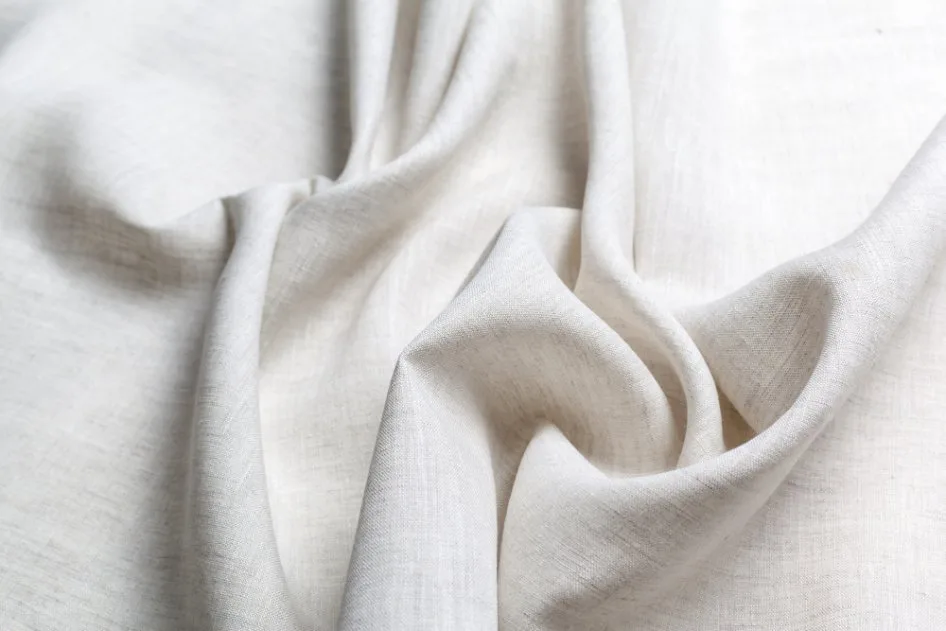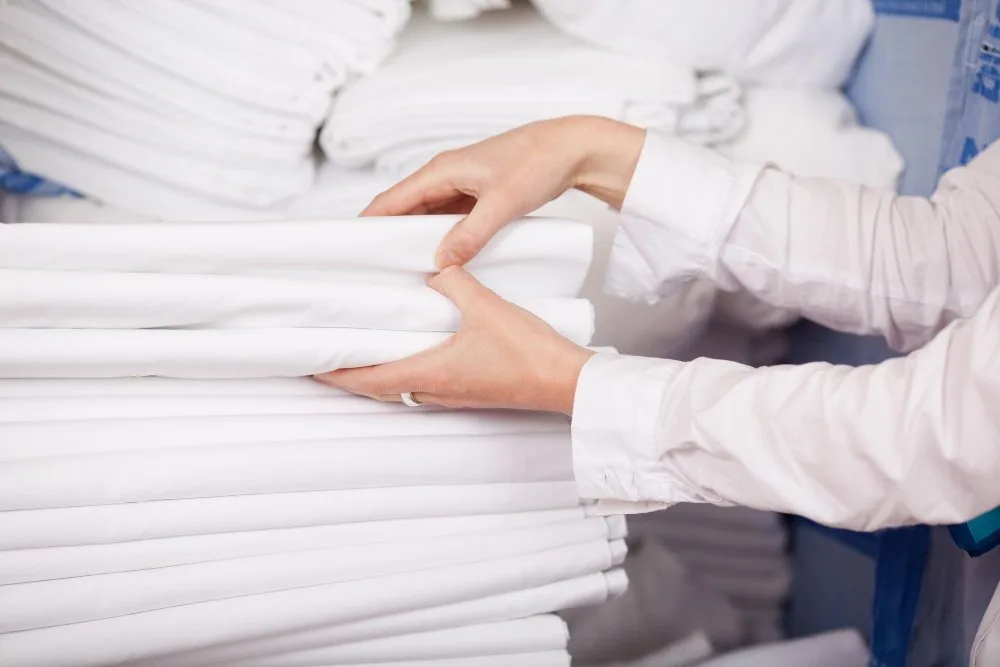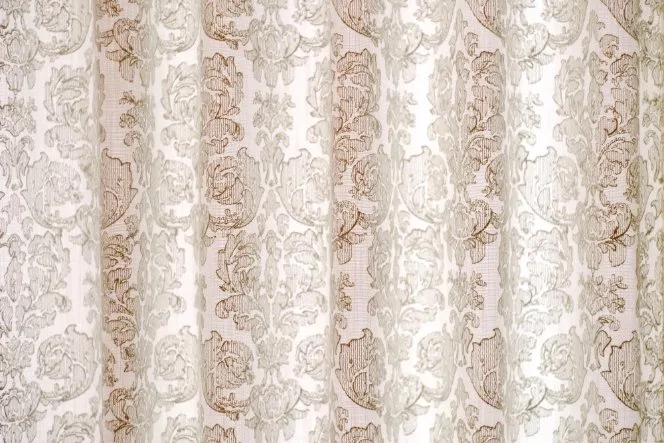Discover the timeless beauty and practical benefits of Holland linen for your home
Table of Contents
- What Is Holland Linen Fabric?
- The Rich History of Holland Cloth
- Superior Quality and Craftsmanship
- Product Range and Design
- Holland Linen vs Cotton: Making the Right Choice
- Health and Allergy Benefits
- Complete Care Guide
- Sustainability and Environmental Impact
- Investment and Pricing
- Frequently Asked Questions
- Conclusion
“Luxury must be comfortable, otherwise it is not luxury.” This quote from Coco Chanel perfectly captures what makes quality bedding so special. For centuries, finely woven textiles have meant refined living, and few materials carry this legacy like Holland linen.
Key Takeaways
- Holland linen comes from centuries-old Dutch weaving traditions, dating back to 1427
- The fabric is 30% stronger than cotton and lasts 10-20+ years with proper care
- It naturally regulates temperature, keeping you cool in summer and warm in winter
- Look for OEKO-TEX and European Flax certifications for quality assurance
- Holland linen gets softer with every wash, unlike cotton which can wear thin over time
What Is Holland Linen Fabric?
Holland linen is a type of high-quality linen fabric that originated in the Netherlands and surrounding regions. The term “Holland cloth” first appeared in English texts in 1427, describing tightly woven linen made from flax fibers using plain-weave techniques.
Unlike mass-produced fabrics, Holland linen is made from long flax fibers that create a sturdy, durable material. The traditional plainweave construction gives it a distinctive texture that feels crisp when new but softens beautifully over time.
What Makes It Different from Regular Linen?
Holland linen stands apart from other loose weave linen types because of its tighter construction. While some linens have an airy, relaxed weave, Holland cloth uses a closely woven technique that makes it more durable and less prone to snagging.
This tight weave also means Holland linen holds its shape better than looser varieties. You’ll notice this especially in bedding, where the sheets maintain their structure even after years of washing.
The Rich History of Holland Cloth
The story of Holland linen begins in medieval Europe, where Dutch weavers mastered the art of creating remarkably strong fabric from flax plants. By the 15th century, their textiles were famous across Europe for quality and durability.
Originally, Holland cloth served practical purposes. Ships used it for sails because it could withstand harsh ocean conditions. Households chose it for furniture covers and window treatments because it lasted for decades. Eventually, people recognized that such a sturdy, breathable fabric would make excellent bedding.
| Aspect | Historical Methods (1400s-1800s) | Modern Techniques (Today) |
|---|---|---|
| Weaving | Hand-operated looms | Computer-guided precision looms |
| Materials | 100% European flax | Ethically sourced European flax with certifications |
| Finishing | Natural oil treatments | Eco-friendly softeners and enzyme washes |
| Average Lifespan | 5+ years | 10-20+ years with proper care |
| Design Options | Basic geometric patterns | Minimalist styles with 15+ custom colors |
From Tradition to Modern Luxury
While traditional Holland cloth focused mainly on function, today’s versions blend that practical strength with modern comfort. Advanced looms create breathable weaves that help you sleep better, while color-lock technology keeps fabrics looking fresh through 50+ washes.
The heritage hasn’t been lost though. Modern Holland linen still uses natural flax fibers and maintains the plainweave structure that made the original fabric so reliable. The difference is in the finishing processes, which now make the fabric softer right from the start.
Superior Quality and Craftsmanship
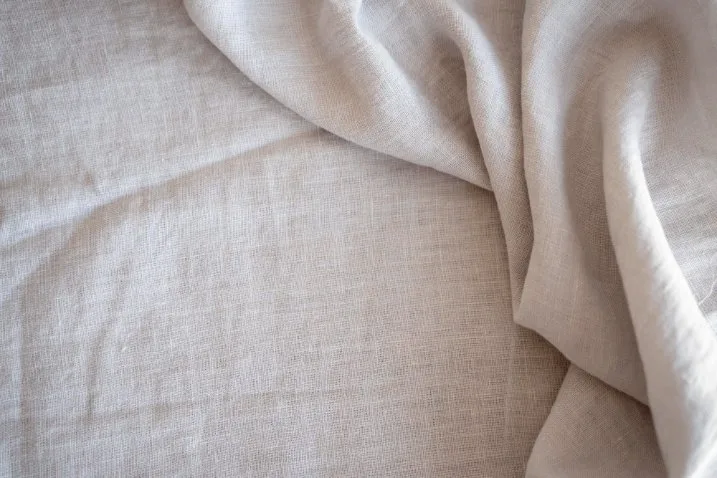
Quality Holland linen begins with careful material selection and testing. Each batch undergoes 15+ quality checks before production starts. This attention to detail ensures you get consistent performance across all products.
Fabric Engineering and Specifications
The best Holland linen fabrics have 40% higher tensile strength compared to standard bedding materials. This means they can handle daily use without developing thin spots or tears.
Natural flax fibers also resist bacterial growth better than synthetic materials. This keeps your sleep surface cleaner between washes, which is especially helpful if you have sensitive skin or allergies.
Understanding GSM (Grams Per Square Meter)
When shopping for linen bedding, you’ll see GSM numbers that indicate fabric weight. Here’s what they mean for you:
- 165-180 GSM: Lightweight and perfect if you sleep hot or live in warm climates. These feel airy and cool against your skin.
- 180-200 GSM: Medium weight that works year-round. This is the sweet spot for most people because it stays cool in summer but adds warmth in winter.
- 200+ GSM: Heavier options that feel more substantial. Great if you prefer a cozy, weighty feel or live in cooler areas.
For comparison, quality Holland linen bedding typically uses 180 GSM fabric, while bath towels are much denser at 700 GSM for better absorbency.
Precision in Production
Modern Holland linen production uses laser-guided cutting systems that achieve 0.5mm accuracy. This precision means seams line up perfectly and edges don’t fray easily.
Reinforced seams can withstand over 200 pounds of pressure, which is why quality linen bedding doesn’t split at the corners even after years of tucking sheets around mattresses. Final inspections reject any items with stitching deviations of even 0.2mm.
Specialized enzyme washes make the fabric 40% less wrinkly naturally, so you spend less time ironing. These treatments work with the fiber structure rather than coating it with chemicals, which means the softness is genuine and lasts.
Understanding Certifications: What They Really Mean
When buying Holland linen, certifications tell you a lot about what you’re getting. Here are the main ones to look for:
OEKO-TEX Standard 100 Class 1
This certification means the fabric has been tested for over 100 harmful substances including formaldehyde, heavy metals like nickel, pesticides, and allergenic dyes. Class 1 is the most strict level, meaning the fabric is safe enough for baby skin.
Independent labs in Europe and Japan do the testing, and they update their standards every year as new research comes out. The OEKO-TEX Association maintains these rigorous standards. If you see this certification, you know you’re not sleeping on chemicals that could irritate your skin or affect your health.
European Flax Certification
This label guarantees the flax was grown in Western Europe (France, Belgium, or the Netherlands) without irrigation, GMOs, or pesticides. The flax plant naturally resists pests in this region and thrives on just rainfall.
The certification tracks the flax from seed to finished fabric, so you know exactly where your linen comes from. All processing must follow International Labour Organization standards, which protect workers’ rights throughout production. The Alliance for European Flax-Linen & Hemp oversees this certification program.
GOTS (Global Organic Textile Standard)
GOTS is the gold standard for organic textiles. It covers both environmental and social standards throughout the entire supply chain. Any chemicals used in dyeing or finishing must meet strict safety criteria.
Companies with GOTS certification get inspected annually to make sure they’re following the rules. If you want truly organic Holland linen with transparent production practices, look for this certification.
Not all Holland linen will have every certification, but quality brands will have at least OEKO-TEX Standard 100. Multiple certifications give you even more confidence in what you’re buying.
Product Range and Design
Holland linen collections span from basic bedding essentials to decorative accents. The range typically includes fitted sheets with 18-inch deep pockets (which fit most modern mattresses), duvet covers with envelope closures, and pillowcases in both standard and king sizes.
Bedding Essentials
Modern Holland linen sheets come with reinforced corners that resist tearing even with frequent use. The textured weaves catch light differently throughout the day, adding visual interest to your bedroom.
| Category | Key Feature | Material Blend |
|---|---|---|
| Sheets | Reinforced corners with 18″ deep pockets | 100% linen or linen-cotton mix |
| Pillowcases | Hidden zippers or envelope closures | Organic cotton or 100% linen |
| Duvet Covers | Button or zipper closures, corner ties | Pure linen with stone-washing |
| Decorative Items | Hand-dyed borders in indigo or charcoal | Pure linen |
Customization Options
Many Holland linen producers offer personalization. You can choose from 23 different monogramming fonts and up to 15 custom dye colors. For unusual bed sizes, made-to-order services ensure proper fit.
Some brands offer linen-cotton blends that are easier to care for than pure linen. These blends work well if you want the durability of linen but prefer something that needs less ironing.
Advanced pre-washing techniques give new fabric a lived-in softness right away. This process also reduces shrinkage to under 2%, so your sheets keep their crisp fit after laundering.
Holland Linen vs Cotton: Making the Right Choice
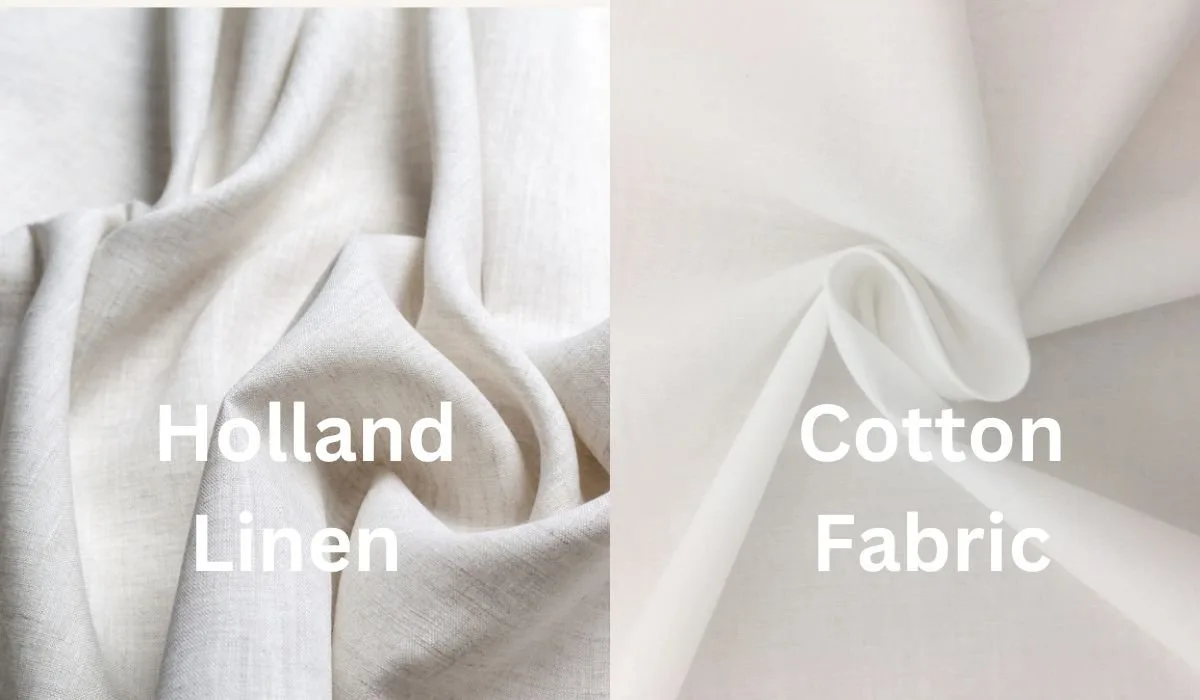
Both Holland linen and cotton make excellent bedding, but they offer different experiences. Understanding these differences helps you pick what works best for your sleep style and preferences. For an in-depth comparison of these two materials, the Sleep Foundation’s linen vs cotton guide provides additional research-backed insights.
The Key Differences
| Feature | Holland Linen | Cotton |
|---|---|---|
| Durability | 3x stronger; lasts 10-20+ years | Good but wears faster; 2-5 years typical |
| Temperature Control | Better breathability; ideal for hot sleepers | Breathable but can trap heat |
| Moisture Management | Absorbs 20% of weight before feeling damp | Good wicking but holds moisture longer |
| Initial Feel | Crisp at first, softens beautifully over time | Soft immediately, may thin with age |
| Weight | Heavier, more substantial feel | Lighter, more delicate drape |
| Wrinkle Factor | Wrinkles easily (part of the relaxed charm) | Less prone to wrinkling, especially percale |
| Price Point | Higher upfront cost | More affordable initially |
| Care Needs | Simple washing; no fabric softener needed | Easy care; more color and pattern options |
| Environmental Impact | Lower water use; grows without pesticides | Higher water needs; often chemical-intensive |
Which Should You Choose?
Choose Holland Linen If You:
- Sleep hot or live in a warm climate
- Want bedding that lasts for decades
- Prefer a relaxed, lived-in bedroom aesthetic
- Don’t mind the natural wrinkled texture
- Value environmental sustainability
- Want naturally hypoallergenic bedding
Choose Cotton If You:
- Prefer immediate softness without a break-in period
- Want a crisp, smooth look (especially with percale)
- Like having lots of color and pattern choices
- Need a more budget-friendly option upfront
- Prefer lighter-weight bedding
- Want wrinkle-resistant sheets
There’s no wrong choice here. Some people even mix both, using cotton sateen sheets in winter for warmth and switching to Holland linen in summer for cooling comfort.
Health and Allergy Benefits
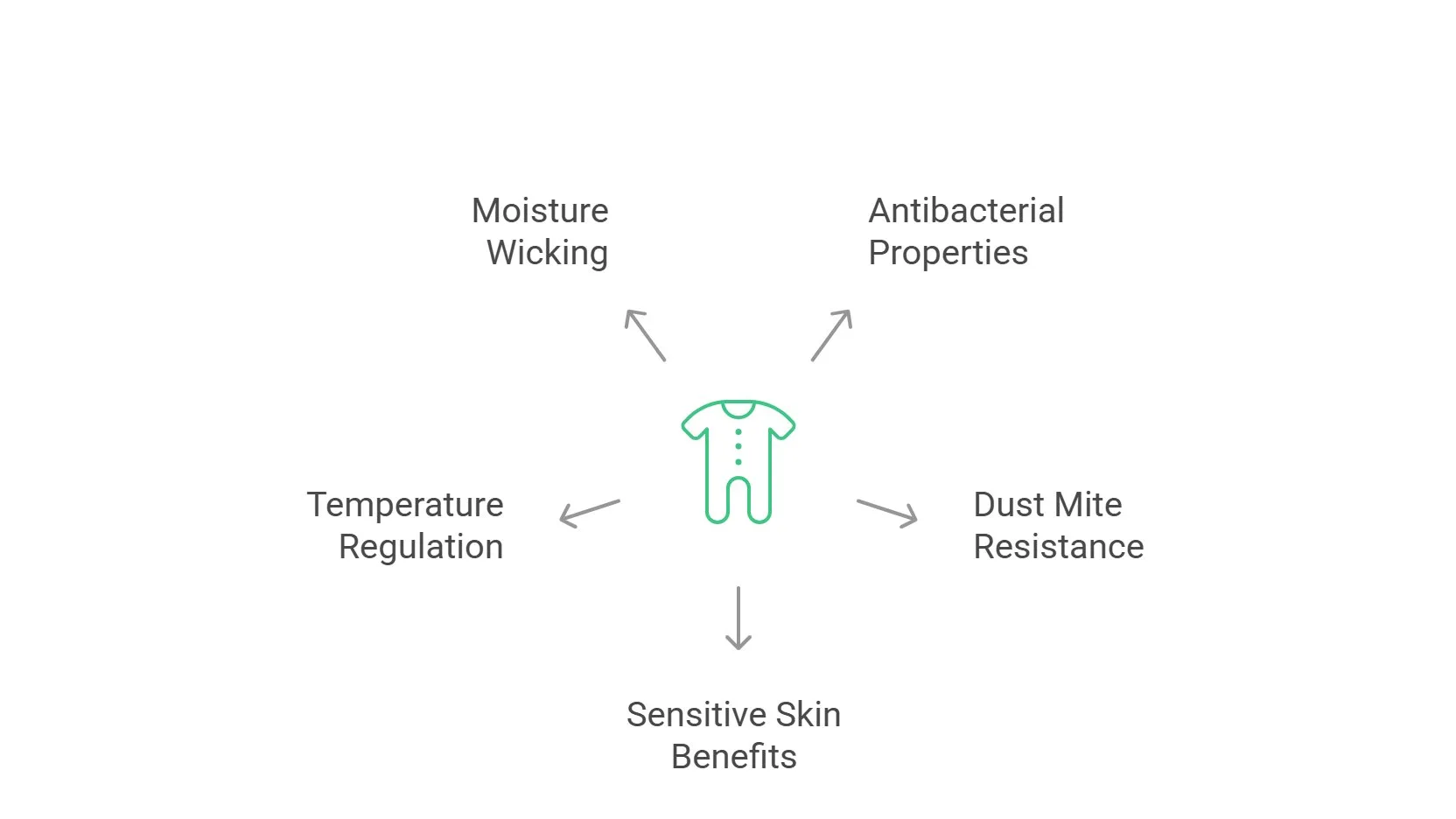
Holland linen offers specific health advantages that make it especially good for people with sensitive skin or allergies.
Natural Antibacterial Properties
Flax fibers naturally resist bacterial growth without any chemical treatments. This means your sheets stay cleaner between washes compared to synthetic materials that can harbor bacteria.
The fabric also resists dust mites, which are a common trigger for allergies and asthma. If you wake up congested or with itchy skin, switching to Holland linen might help.
Benefits for Sensitive Skin
People with eczema or other skin sensitivities often find linen gentler than other fabrics. The smooth, long fibers don’t irritate skin the way some synthetic materials can.
Because OEKO-TEX certified linen is tested for over 100 harmful chemicals, you know you’re not sleeping on irritating dyes or finishing agents. This chemical-free sleep environment can reduce skin flare-ups.
Temperature and Moisture Benefits
The hollow structure of flax fibers allows air to flow freely through the fabric. This natural ventilation keeps you at a more stable temperature throughout the night.
Linen’s moisture-wicking ability is particularly useful if you sweat at night. Unlike fabrics that retain dampness (which can promote bacterial growth), linen pulls moisture away from your skin and releases it into the air.
Complete Care Guide: How to Wash and Maintain Holland Linen
Proper care keeps your Holland linen looking great for years. The good news is that linen is actually easier to care for than most people think.
Washing Instructions
- Separate by Color: Wash lights and darks separately. If you have striped linen, check if it’s yarn-dyed (which most quality linen is). Yarn-dyed fabrics won’t bleed, so you can wash them with lights if they contain white.
- Use the Right Temperature: Wash in warm water (30-40°C/86-104°F). This temperature removes dirt and body oils without being harsh on the fibers. Cold water works too if you want to save energy, though it’s slightly less effective at cleaning.
- Choose Your Detergent Carefully: Use a mild liquid detergent made for delicates. Avoid detergents with optical brighteners, which can fade colors over time. Skip bleach completely as it weakens linen fibers and can cause yellowing.
- Skip Fabric Softener: This is important. Linen softens naturally with each wash. Fabric softener actually coats the fibers and reduces absorbency, which defeats one of linen’s best features.
- Use Gentle Cycle: Select the gentle or delicate cycle on your washing machine. Don’t overload the drum—keep it no more than three-quarters full so the fabric can move freely.
- Button Up Before Washing: If you’re washing duvet covers, button or zip them closed first. This prevents other items from getting stuck inside during the wash cycle.
Drying Tips
- Remove Promptly: Take your linen out of the washing machine as soon as the cycle ends. Give each piece a good shake to release wrinkles.
- Tumble Dry on Low: If using a dryer, set it to low heat and add wool dryer balls. These help prevent wrinkles and speed up drying. Run the dryer for just 10-15 minutes.
- Remove While Damp: This is key. Take your linen out while it’s still slightly damp (about 80-90% dry). Linen dries faster than cotton, so check after 8-10 minutes the first time.
- Air Dry the Rest: Hang the slightly damp linen to finish drying naturally. You can drape it over a drying rack indoors or hang it outside in the shade (direct sunlight can fade colors).
- Why This Method Works: Removing linen while damp and letting it air dry prevents excessive wrinkling. The weight of the damp fabric naturally pulls out creases as it hangs.
Dealing with Wrinkles
Holland linen wrinkles naturally, and many people love this relaxed look. If you prefer a smoother appearance, here’s what to do:
- Iron While Damp: If you want to iron, do it while the fabric is still slightly damp. Use a medium-hot iron with plenty of steam.
- Iron Inside Out: For darker colors, iron on the reverse side to prevent shiny patches.
- Hang Immediately: Don’t fold linen right after ironing. Let it hang for a few minutes so the heat-pressed fibers can relax.
Stain Removal Without Bleach
When you get a stain on your Holland linen, act quickly but gently:
- Blot (don’t rub) the stain with a damp cloth
- Mix a small amount of mild detergent with water
- Dab the solution onto the stain
- For stubborn stains, try white vinegar or baking soda paste
- Wash as normal afterward
Storage Tips
Store your Holland linen in a cool, dry place away from direct sunlight. A popular trick is to keep complete bedding sets inside one of the pillowcases. This keeps everything organized and makes bed-changing day easier.
Avoid storing linen in plastic bags, which can trap moisture and promote mildew. If you need to protect items from dust, use breathable cotton storage bags instead.
For more detailed washing guidance, check out this interactive linen care calculator that gives personalized instructions based on your specific linen type and washing machine.
Sustainability and Environmental Impact
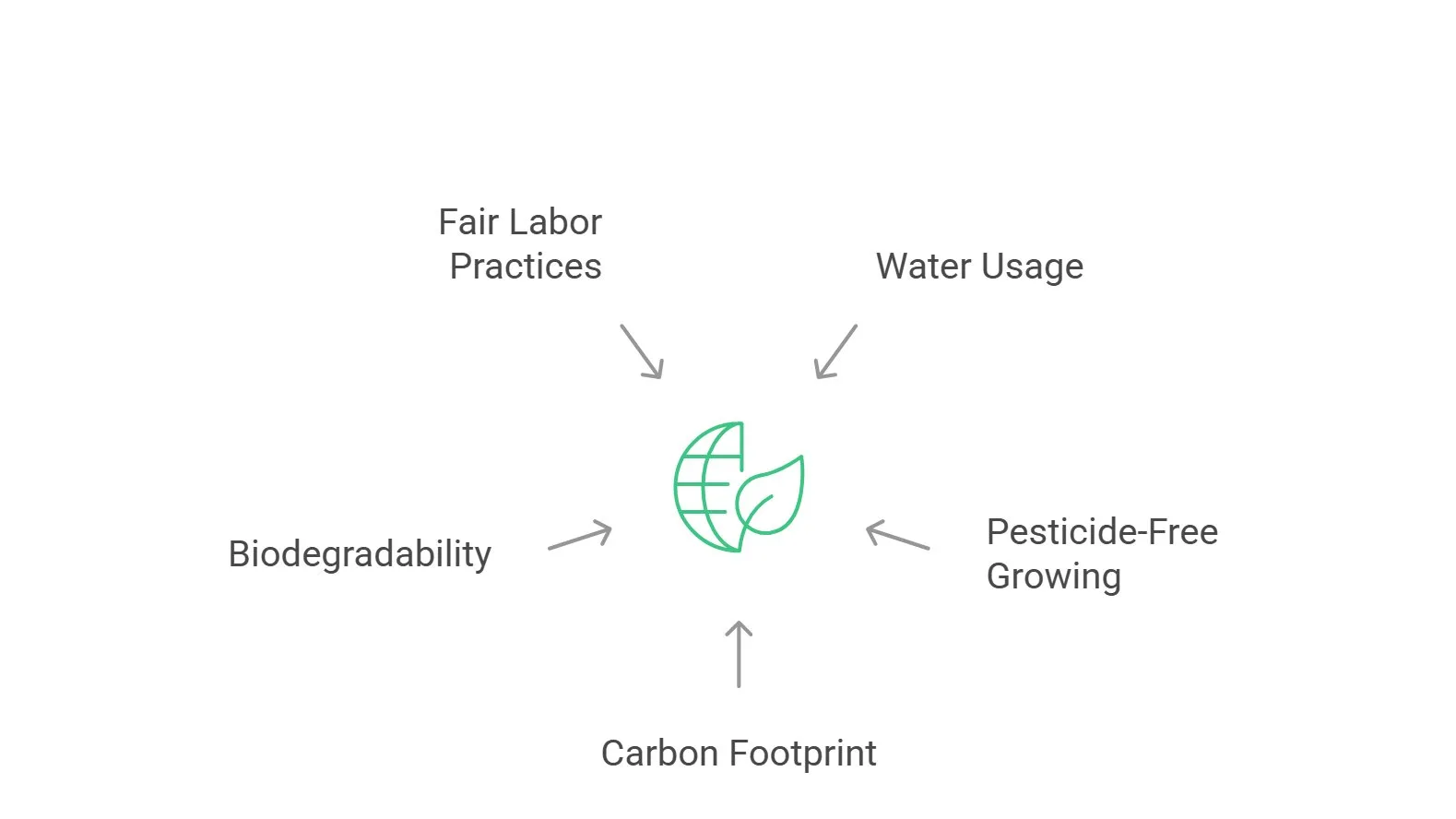
Holland linen stands out as one of the most environmentally friendly bedding options available. Here’s why it matters for the planet.
Water Usage
Flax plants need very little water to grow, especially in their natural habitat of Western Europe. The plants thrive on natural rainfall alone, with zero irrigation required. Compare this to cotton, which needs thousands of gallons of water per pound of fiber produced.
Even the processing of flax into linen uses less water than cotton manufacturing. The fiber extraction is completely mechanical, using no water at all in the initial stages.
Pesticide-Free Growing
In France, Belgium, and the Netherlands, flax naturally resists pests. Farmers grow it without any pesticides or herbicides, which means no harmful chemicals entering groundwater or soil.
The plants also improve soil health rather than depleting it. Flax adds organic matter to the soil and helps with crop rotation, making it a regenerative crop that benefits farms long-term.
Carbon Footprint
Flax plants absorb CO2 as they grow, and because they need no synthetic fertilizers or irrigation systems, the overall carbon footprint is remarkably low. Some linen producers have achieved carbon-neutral or even carbon-negative certification.
Biodegradability
When your Holland linen eventually reaches the end of its life (which takes many years), it biodegrades completely. Unlike synthetic materials that can take hundreds of years to break down, pure linen returns to the soil within months.
This is particularly true for linen dyed with eco-friendly dyes, which don’t contain heavy metals or toxic chemicals that would persist in landfills.
Fair Labor Practices
Quality Holland linen certified under European Flax or GOTS standards must follow International Labour Organization guidelines. This ensures workers throughout the supply chain receive fair wages and work in safe conditions.
Many European mills are family-run operations that have been producing linen for generations, maintaining traditional craft skills while treating workers ethically.
Investment and Pricing: Understanding the Cost
Holland linen costs more upfront than cotton bedding, but the price makes sense when you look at longevity and quality.
Typical Price Ranges (Queen Size)
Sheet Sets: $250-$450
Duvet Covers: $280-$550
Individual Fitted Sheets: $120-$220
Pillowcases (pair): $45-$85
Cost Per Year Analysis
Here’s where the value becomes clear. If you spend $350 on a Holland linen sheet set that lasts 15 years, you’re paying about $23 per year. A $150 cotton set that lasts 3 years costs $50 per year.
Over a decade, you’d need to replace cotton sheets 3-4 times, spending $450-$600 total. That same Holland linen set would still be going strong, potentially saving you money while performing better the entire time.
What Affects the Price?
Several factors influence how much you’ll pay for Holland linen:
- Certifications: OEKO-TEX and GOTS certifications add cost but guarantee safety and sustainability
- Origin: European-made linen from France, Belgium, or the Netherlands typically costs more than Eastern European or Asian production
- GSM Weight: Heavier linens with higher GSM ratings cost more due to more fiber content
- Finishing: Stone-washing, enzyme treatments, and garment dyeing add to the price
- Brand Reputation: Established brands with proven quality command premium prices
Comparing to Competitors
Major linen bedding brands like Parachute, Brooklinen, and Cultiver typically charge $289-$600 for queen sheet sets. Holland linen from certified European sources falls in the mid-to-upper range of this spectrum, reflecting its quality and authenticity.
Budget brands offering linen at under $200 for a full set often use lower-quality flax, looser weaves, or lack proper certifications. These may not deliver the durability and performance you expect from true Holland linen.
Frequently Asked Questions
Yes, linen can shrink 2-4% during the first wash. Most quality Holland linen comes pre-washed to minimize this, reducing shrinkage to under 2%. To prevent additional shrinkage, wash in warm (not hot) water and avoid high-heat drying.
New linen often sheds loose fibers during the first 2-3 washes as the material relaxes. This is completely normal and doesn’t indicate poor quality. The shedding will stop once the fibers stabilize. You can speed up the process by running a few cold-water cycles with wool dryer balls.
No, never use chlorine bleach on linen. Bleach weakens the flax fibers and can cause yellowing or discoloration. For stubborn stains, use oxygen-based cleaners, white vinegar, or baking soda instead. These are effective without damaging the fabric.
Wash your Holland linen sheets once a week, just like other bedding. However, linen’s natural antibacterial properties mean it stays fresher longer than cotton. If you shower before bed and don’t sweat much at night, you could stretch it to every 10-12 days.
Yes, Holland linen is one of the best fabrics for hot sleepers. The hollow flax fibers allow excellent airflow, and the fabric wicks moisture away from your skin. Linen can absorb up to 20% of its weight in moisture before feeling damp, keeping you dry and cool all night.
Absolutely. Linen’s natural texture includes wrinkles, which many people love for the relaxed, organic aesthetic it creates. The wrinkles don’t indicate poor quality—they’re part of linen’s character. If you prefer a smoother look, iron while the fabric is slightly damp.
The terms often overlap. Both refer to high-quality linen from Western Europe. “Holland” historically meant the Netherlands region, while “Belgian” refers to Belgium. Today, flax from all three countries (including France) gets labeled European Flax. The growing conditions and quality standards are similar across this region.
Many Holland linen producers offer made-to-order services for non-standard bed sizes. This includes California king, split king, or extra-deep pocket fitted sheets. Custom orders typically take 3-6 weeks and may cost 15-25% more than standard sizes.
Pure linen (100% flax) offers the best durability, breathability, and that distinctive linen feel. Linen-cotton blends (typically 60% linen, 40% cotton) are softer from day one and wrinkle less, making them easier to care for. If you want low-maintenance bedding, consider a blend. For maximum durability and temperature control, choose pure linen.
With proper care, quality Holland linen can last 15-20 years or more. The fabric actually gets softer and better with age rather than wearing out. Many people pass down linen bedding through generations. The key is following proper washing instructions and avoiding harsh chemicals.
Conclusion
Holland linen brings together centuries of textile tradition with modern comfort needs. This isn’t just about buying bedding—it’s about choosing a material that improves your sleep quality while lasting for decades.
What Makes Holland Linen Worth It
The fabric’s strength comes from those long flax fibers woven in a tight plainweave structure that has proven itself since medieval times. You get bedding that’s three times stronger than cotton, naturally resists bacteria, and regulates temperature better than almost any other material.
The certifications matter too. OEKO-TEX Standard 100 ensures you’re not sleeping on harmful chemicals. European Flax certification guarantees the flax was grown sustainably without pesticides or excessive water use. These aren’t just marketing badges—they represent real testing and oversight.
The Financial Reality
Yes, you’ll spend more upfront. A quality Holland linen sheet set costs $250-$450 compared to $100-$200 for cotton. But when that linen lasts 15+ years versus cotton’s 3-5 years, the math works in your favor. You’re actually spending less per year while getting better performance.
Think of it like buying a well-made pair of shoes that lasts five years instead of cheap ones you replace annually. The initial investment pays off through longevity and quality of experience.
Who Should Choose Holland Linen
Holland linen makes perfect sense if you:
- Sleep hot or struggle with night sweats
- Have sensitive skin, allergies, or conditions like eczema
- Want bedding that gets better with age instead of wearing out
- Value environmental sustainability in your purchases
- Appreciate natural, relaxed aesthetics over perfectly pressed perfection
- Would rather buy once and keep for years than replace things frequently
It might not be the best choice if you need immediate softness without a break-in period, prefer crisp pressed sheets without any wrinkles, or have a tight budget that can’t accommodate the higher initial cost.
Key Takeaways for Your Purchase
Look for certifications: Don’t buy Holland linen without at least OEKO-TEX Standard 100. Better yet, find products with both OEKO-TEX and European Flax certifications.
Pay attention to GSM: For most people, 180-200 GSM hits the sweet spot for year-round use. Go lighter (165-180 GSM) if you live in hot climates or heavier (200+ GSM) if you want more weight and warmth.
Start with one set: If you’re new to linen, buy one sheet set before committing to a full bedroom makeover. Live with it through a few washes to see how it feels as it softens. Most people love it, but it’s smart to test before going all-in.
Follow the care instructions: This cannot be stressed enough. Skip the fabric softener, use warm (not hot) water, and remove from the dryer while slightly damp. These simple steps make all the difference in how your linen ages.
Be patient with the break-in: New Holland linen feels crisp and may seem stiff. Give it three or four washes. By then, you’ll start feeling the softness that only improves from there.
The Bigger Picture
Beyond the practical benefits, choosing Holland linen supports sustainable agriculture and traditional textile craftsmanship. The European flax industry maintains farming practices that actually improve soil health and require no irrigation or pesticides.
Many of the mills weaving this fabric are family-run operations that have passed down skills through generations. Your purchase helps keep these traditions alive while ensuring workers receive fair treatment and wages.
Making Your Decision
Holland linen isn’t a compromise between quality and comfort—it delivers both. The fabric that Dutch weavers perfected in the 1400s remains one of the best bedding materials available today because it simply works.
If you want bedding that keeps you comfortable across seasons, lasts for years, and gets better with every wash, Holland linen delivers. The investment makes sense when you calculate the long-term value and daily comfort.
The wrinkles are part of the charm. The initial crispness softens into something special. And that relaxed bedroom aesthetic you get with natural linen? That’s become a design trend because people recognize how good it looks and feels.
Whether you’re upgrading from worn-out cotton sheets or starting fresh with quality bedding, Holland linen offers something different—fabric with history, craftsmanship, and performance that actually delivers on its promises. For more on other textile options, you might also explore satin fabric and how it compares for specific bedding needs.
Sweet dreams start with the right sheets. Holland linen might just be what your bedroom has been missing.

